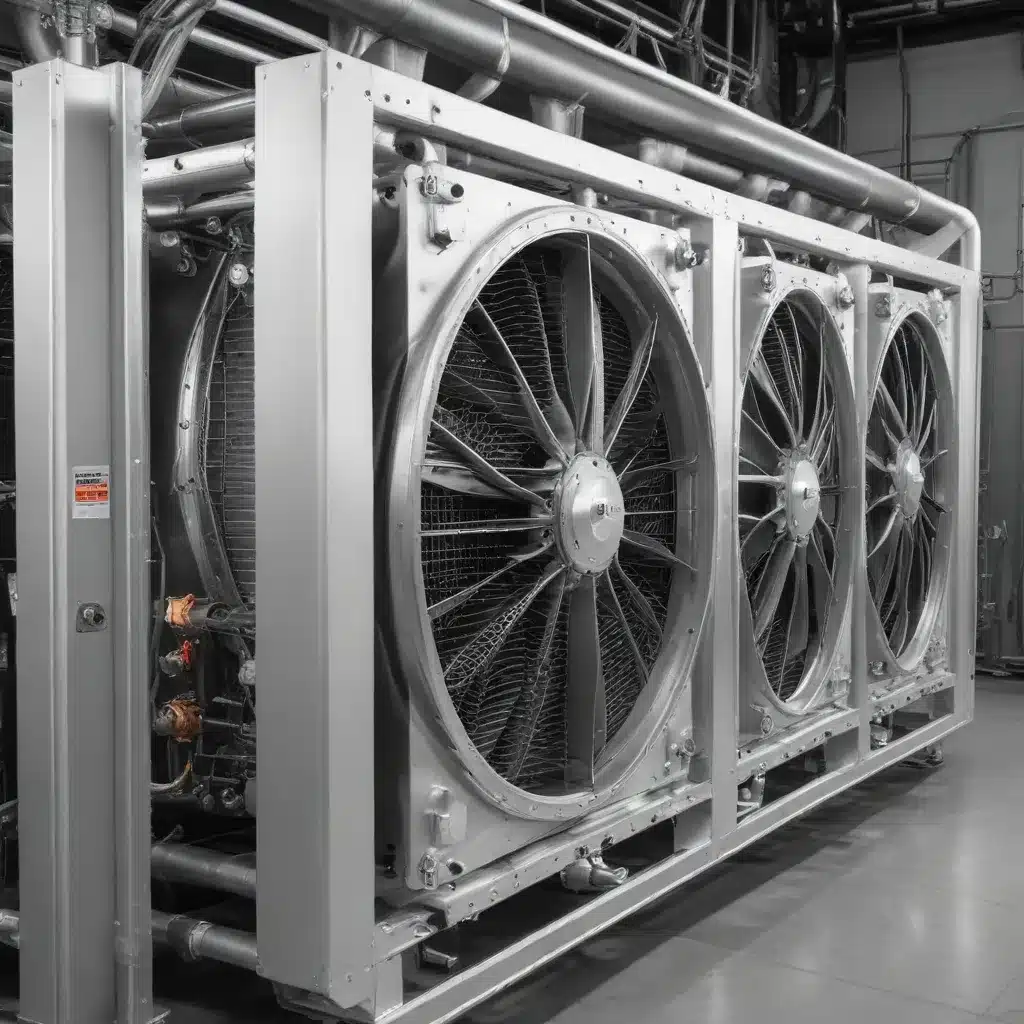
The Evolution of Air-Cooled Heat Exchangers: Enhancing Performance and Sustainability
In the ever-evolving landscape of thermal management, air-cooled heat exchangers have emerged as the unsung heroes, playing a critical role in a wide range of industries. From powering data centers to ensuring the smooth operation of industrial processes, these ingenious devices have continuously pushed the boundaries of efficiency and sustainability.
Harnessing the power of convection, air-cooled heat exchangers utilize ambient air to dissipate heat, making them an increasingly attractive alternative to traditional water-based cooling systems. This approach not only simplifies the overall cooling infrastructure but also reduces water consumption, a crucial consideration in regions facing water scarcity.
Designing for Optimal Performance
The key to unlocking the full potential of air-cooled heat exchangers lies in their intricate design. Thermal engineers have dedicated countless hours to perfecting the geometry, material selection, and airflow optimization of these systems, all with the goal of maximizing heat transfer efficiency.
One innovative approach involves the use of finned surfaces, which dramatically increase the surface area in contact with the cooling air. By strategically arranging these fins, designers can enhance heat dissipation while minimizing pressure drops, ensuring optimal airflow and reducing the energy required to power the cooling fans.
To keep pace with the ever-increasing demand for cooling, designers have also explored innovative fin designs, including louvered and wavy configurations. These geometries not only enhance heat transfer but also minimize the pressure drop, allowing for the use of smaller, more energy-efficient fans while maintaining the desired cooling capacity.
Tackling Maintenance and Reliability Challenges
Ensuring the long-term reliability and performance of air-cooled heat exchangers is another critical aspect of their design and deployment. Over time, these systems can accumulate dust, debris, and other contaminants, which can impede airflow and reduce heat transfer efficiency.
To address this challenge, manufacturers have developed automated cleaning systems that periodically remove these unwanted buildups, maintaining optimal airflow and thermal performance without the need for manual intervention. This not only extends the lifespan of the heat exchanger but also reduces the maintenance burden on end-users.
Applying Air-Cooled Heat Exchangers Across Industries
The versatility of air-cooled heat exchangers has enabled their widespread adoption across a diverse range of industries, each with its unique cooling requirements and operational challenges.
Data Centers: Keeping Computing Power Cool
In the rapidly expanding world of data centers, where computing power and energy demands are constantly on the rise, air-cooled heat exchangers have emerged as a vital component in ensuring efficient and sustainable cooling.
By leveraging the inherent advantages of air-cooled technology, data center operators can reduce their reliance on energy-intensive water-based cooling systems, leading to significant cost savings and a reduced environmental footprint. Additionally, the modular and scalable nature of air-cooled heat exchangers allows for seamless integration with expanding infrastructure, ensuring that cooling capacity keeps pace with the ever-growing computational demands.
Industrial Processes: Optimizing Thermal Management
Industries such as manufacturing, petrochemical, and power generation rely on robust thermal management solutions to ensure the smooth and efficient operation of their processes. Air-cooled heat exchangers have become an indispensable part of this equation, offering reliable and versatile cooling capabilities.
In high-temperature industrial environments, air-cooled heat exchangers can effectively dissipate heat from various process streams, maintaining critical equipment within safe operating ranges. Their ability to withstand harsh conditions, such as exposure to corrosive chemicals or high-particulate-laden airflows, makes them a practical choice for these demanding applications.
Renewable Energy: Integrating Sustainable Cooling
As the global push for renewable energy gains momentum, the role of air-cooled heat exchangers becomes increasingly vital. In solar thermal power plants, these heat exchangers play a crucial role in converting the heat generated by solar collectors into usable electricity, enabling the realization of efficient and eco-friendly energy production.
Furthermore, air-cooled heat exchangers are integral to the cooling systems of wind turbines, ensuring the optimal performance and longevity of these renewable energy generators. By seamlessly integrating with these sustainable energy technologies, air-cooled heat exchangers contribute to the overall environmental sustainability of the renewable energy landscape.
Embracing the Future of Thermal Management
As the world continues to grapple with the pressing challenges of energy efficiency and environmental stewardship, the evolution of air-cooled heat exchanger technology is poised to play a pivotal role in shaping a more sustainable future.
Advancements in Materials and Coatings
Researchers and engineers are continuously exploring new materials and coatings that can further enhance the performance and durability of air-cooled heat exchangers. Emerging materials, such as graphene-reinforced composites and nanostructured surfaces, hold the promise of even greater heat transfer capabilities and improved resistance to fouling and corrosion.
Integrating Renewable Energy Sources
The integration of air-cooled heat exchangers with renewable energy systems, such as solar thermal and wind power, is a key focus area for the industry. By seamlessly coupling these technologies, the cooling systems can harness clean energy sources, further reducing the environmental impact and carbon footprint of the overall cooling infrastructure.
Embracing Automation and Predictive Maintenance
Toward a Greener, More Efficient Future
As the world continues to grapple with the pressing challenges of energy efficiency and environmental stewardship, the evolution of air-cooled heat exchanger technology is poised to play a pivotal role in shaping a more sustainable future. By embracing innovative materials, integrating renewable energy sources, and harnessing the power of automation and predictive maintenance, the air-cooled heat exchanger industry is leading the charge toward a greener and more efficient tomorrow.
At Air Cooled Heat Exchangers, we are at the forefront of this transformation, continuously pushing the boundaries of thermal management innovation. Our team of experts is dedicated to developing cutting-edge solutions that not only enhance performance but also prioritize sustainability and environmental responsibility. Join us on this journey as we unlock the secrets of efficient and eco-friendly cooling, paving the way for a brighter, more sustainable future.

